Warehouse is the latest mega project headed for I-84 site
Milford. It’s a natural location for commerce that relies heavily on e-commerce package delivery trucks, but opponents say protecting the Milford aquifer underneath is more important.
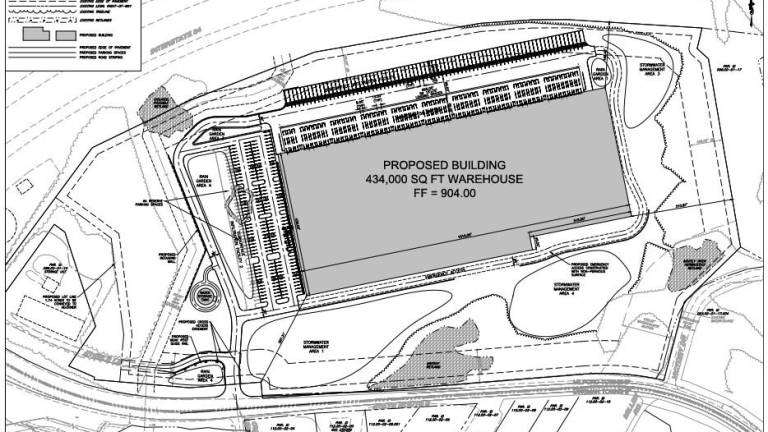
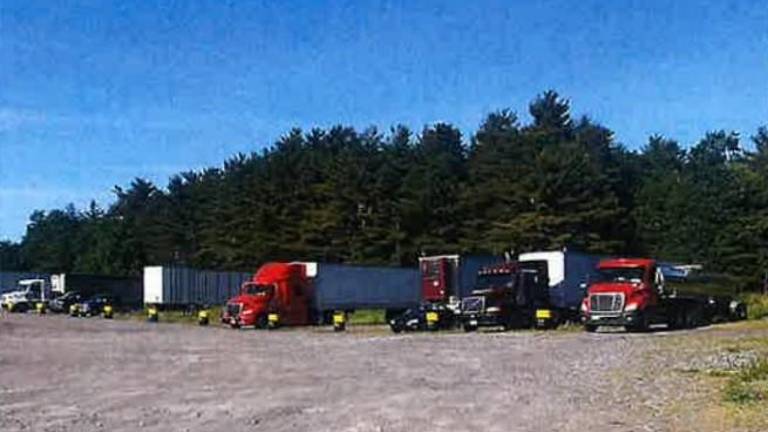
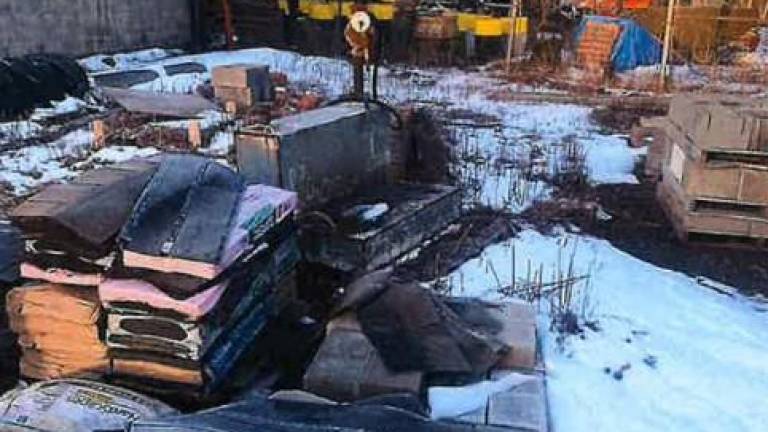
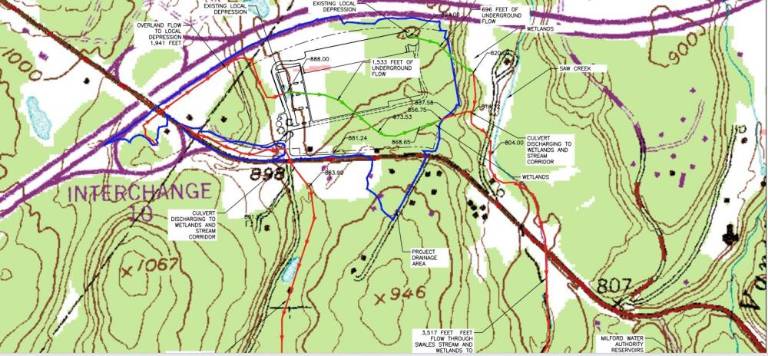
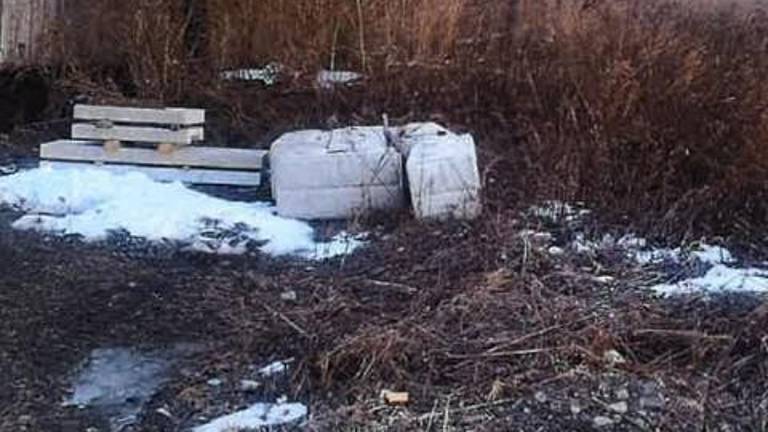
A mega warehouse is the latest project proposed for a site that has not been lucky for a string of other would-be developers.
The plot of land nestled between Interstate 84 and State Route 6 in Milford Township is a natural location for commerce that relies heavily on trucks. But the challenge of protecting the Milford aquifer underneath, which provides the Exceptional Value-rated water that people throughout Pike County depend on, stopped a shopping mall in the 1980s and a Home Depot in 2000. In the 1990s, a short-lived mining operation closed down after damaging the aquifer.
What about this latest project makes it different from the others?
Technology is now “far more advanced than what was considered to be economically feasible” when those earlier projects were first proposed, Mike Gable, an engineer for LVL Engineering, told the Courier. LVL submitted a 683-page report on the project for National Land Developers.
None of the earlier plans included “meaningful stormwater management,” Gable said, and would have built sewage treatment plants that discharged effluent into the Sawkill Creek.
This did not pass muster with the Pennsylvania Department of Environmental Conservation. Gable said the state’s reclassification of the Sawkill to Exceptional Value prohibited most of the sewage treatment systems in use when the earlier projects were proposed. The warehouse will generate “considerably less” effluent than the earlier projects would have, he said.
A history of disturbance
The 44-acre site is not a pristine tract of woods. Even before 1913, the site was excavated for building materials for Milford Borough and Route 6, and then it was used for farming. In 1969, the northern part of the farm was taken by the state to build I-84. The years 1987 through 2017 saw extensive construction activities on the site.
No stormwater management facility is currently in place to protect the aquifer from run-off coming from the interstate, Gable told the Courier. According to the engineering report, about five acres in the center of the site are taken up with gravel and buildings from an “ad hoc trucking terminal” and construction business. The site also contains nearly an acre devoted to “refuse storage” and processing. A “highly eroded drainage ditch” lies upslope, along the entrance road to a self-storage facility.
All of these current uses are contributing “uncontrolled” run-off into the Saw Kill, the report says: “This area is a concern for potential groundwater contamination. The existing use in the area discharges uncontrolled stormwater flows into the pond with no effective stormwater filtration facilities to protect the receiving waters.”
Will these problems be fixed, whether or not the warehouse goes through?
The Milford Township Board of Supervisors told the Courier that because the board is a tribunal in the middle of a conditional use hearing, it is “unable to take a position or answer questions concerning the warehouse at this time.”
Gable told the Courier that all runoff on the warehouse property, even if it originates from a source offsite, will be controlled. “The advanced stormwater controls and sanitary sewage disposal system that National Land is proposing will protect the aquifer,” he said.
Project in early stages
Aside from the engineering report and one public hearing, not much has advanced. The land sale has not been completed. No tenants are lined up to occupy the warehouse. The documents that will determine the project’s fate are not yet finished: the township is still working on its water protection ordinance and on the comprehensive plan that will guide its zoning. Milford borough’s water authority is working on the overlay map that will be used to decide the boundaries of water protection areas.
The water protection ordinance, called the Wellhead/Watershed Zoning Amendment, prohibits the bulk storage of hazardous materials within 400 feet of a well or 1,000 feet around a community water system, or within the “watersheds of Sawkill Creek and Vantine Brook upgradient of Milford Springs,” unless “secondary containment is provided.” It would allow tanks of hazardous materials in excess of 550 gallons if they have secondary containment and the ability to monitor the interstitial space between the primary and secondary containers.
The warehouse’s conditional use application says there will be no hazardous materials on site.
“The comprehensive plan update is in early stages and will not be completed for approximately another year,” Shahana Shamim, the township’s secretary/treasurer, told the Courier.
In meetings earlier this year, the planning board said the warehouse will be a part of the comprehensive plan, but that the warehouse “cannot be touched” until the plan is finished.
The planning board said it seeks to promote light industry, technological industry, housing, and retail establishments, with a view to supporting young families and sustaining growth. The board took note of the failing fast food establishments and warehouse development in neighboring municipalities, and also said the township doesn’t have ambulance and safety services sufficient to meet its current needs.
A public hearing on the latest draft of the water protection ordinance, officially called the Wellhead/Watershed Zoning Amendment, will be held at 7 p.m. on July 17, at township hall, 560 Route 6 & 209, Milford. This ordinance does not directly apply to the warehouse application. The next hearing date on the warehouse application is 6 p.m. on Tuesday, July 25, at the Best Western in Matamoras, 120 Routes 6 and 209. (Note: This date reflects a scheduling change since this story was originally posted.)
Mega resistance
In the meantime, local activists have gotten into gear. Vito DiBiasi of the Friends of the Milford Aquifer has for months been objecting to the project before the township supervisors, who will ultimately decide the project. The proposed water ordinance does not come close to protecting the entire 2.5-by-0.75-mile aquifer, he says.
Opponents say it’s not just the position of the aquifer but its type that makes it vulnerable: it’s an uncontained basin more apt to spread pollution widely than a contained basin would be.
A new website, waternotwarehouse.com, has just been launched to oppose the project. On June 14 Jennifer Liu sent the link to members of the Milford Merchants group with the message: “We need all to understand how a 40-foot-tall, 434,000 SF warehouse project impacts the town, water resources, tourism, land values, etc.”
At the township’s May 1 meeting, Don Quick, a former president of the township supervisors, served a notice of intent to sue the board if it approved the warehouse’s conditional use application.
At a planning board meeting in April, Quick said that about 10 to 15 years ago, the fire department used hundreds of thousands of gallons of water to put out a fire at a nearby warehouse that had burned to the ground. It didn’t directly affect the Milford aquifer, he said, but the runoff went to the Delaware River. The warehouse was one-ninth the side of the newly proposed warehouse.
But the lessons of the past 40 years have not induced the township to put the site off limits to large-scale development. Current zoning allows projects like the warehouse to build, as long as they meet all of the township's conditions.
Truck traffic concerns
Besides water, local residents most often bring up the massive infusion of truck traffic to the site.
Milford Borough has been denied the chance to give input during the ongoing hearings because it was not listed as an interested party. Trustee Joe Dooley said only the borough’s water authority, which operates separately from the borough government, will have input, in addition to the fire department and a few individuals, including Peter Pinchot, a neighbor of the project site.
Dooley disagrees with LVL’s report that 100 percent of truck traffic will be limited to I-84, especially the trucks feeding the warehouse. “They don’t tell truck drivers how to go,” he said of the National Land Developers. “They’ll (the truck drivers) go from I-80 to Route 15 to Route 6 and then up the hill” in the borough.
Having no control over truck drivers, how can the developer promise there will be no truck traffic through Milford Borough or other local roads? he asked.
Gable, the LVL engineer, said in an email to the Courier, “It is simply not economical for truck drivers to utilize lower classification roads such as 206 in New Jersey, and 209 in Pennsylvania for moving products from one distribution corridor to another. These lower classification roads have lower speed limits, stop signs and other traffic control devices slow travel and increase fuel consumption.”
National Land Developers does acknowledge it is likely a small amount of truck traffic from this site will provide local deliveries to Milford Borough, and that “a very small number of drivers coming to or from the project site will break the law and drive into or through Milford Borough. Aggressive law enforcement should be able to control and limit the number of violations.”
A note to readers: Do you think the new warehouse will bring economic opportunity to the community, or environmental degradation? Please let us know your thoughts by emailing paoffice@strausnews.com or posting under this story at pikecountycourier.com.
BY THE NUMBERS
Where is the site? 247 Route 6, Milford
How big is it? 44.8 acres
Who owns it? Milprop Associates II, whose principals are listed as Gail Wall and Norbert Wall of Melbourne Beach, Fla. Norbert died in 2015.
When did they buy it? 1987
How much did they pay for it? $4.7 million
How big will the warehouse be? 435,000 square feet, the size of nine football fields, with 58 loading docks and 178 parking spaces. (A mega warehouse is considered to exceed 400,000 square feet.)
How many jobs will the warehouse create? 80 to 110 after construction, which will offer its own employment opportunities, is completed.
What do warehouse jobs pay? The average salary for a warehouse worker in the United States is $33,010, according to Zippia.com, and range between $26,000 and $40,000 a year, depending on location.
What is the average salary in Pike County? $31,416, according to govSalaries.com.
Who will receive property tax revenue from the warehouse? The three taxing bodies: Pike County, Milford Township, and the Delaware Valley School District.
How many access roads will there be? One “low-volume” driveway.
How much treated sewage discharge will there be? Up to 3,900 gallons per day. “The effluent will then travel through the upper soil mantle to the water table which is estimated to be 15 to 20 feet below the sewage disposal area,” according to LVL Engineering. “After passing through this natural filter media, the treated effluent will mix with the water table and flow along the surface of the aquifer and into a mostly open herbaceous wetland.”
How big will the septic tank be? 6,350 gallons
How will fires be extinguished? A water storage tank of 180,000 to 260,000 gallons will be provided onsite, with a fire pump and looped fire protection around the building. “The water withdraw will have no effect on the aquifer below the site,” says LVL.
When are future hearings? A public hearing on the latest draft of the Wellhead/Watershed Zoning Amendment, will be held at 7 p.m. on July 17, at township hall, 560 Route 6 & 209, Milford. A public hearing on the warehouse conditional use application is now scheduled for 6 p.m. on Tuesday, July 25, at the Best Western in Matamoras, 120 Routes 6 and 209.